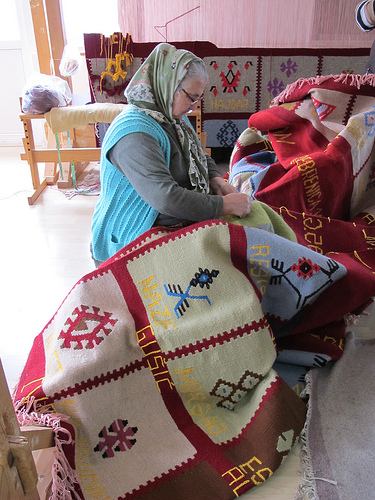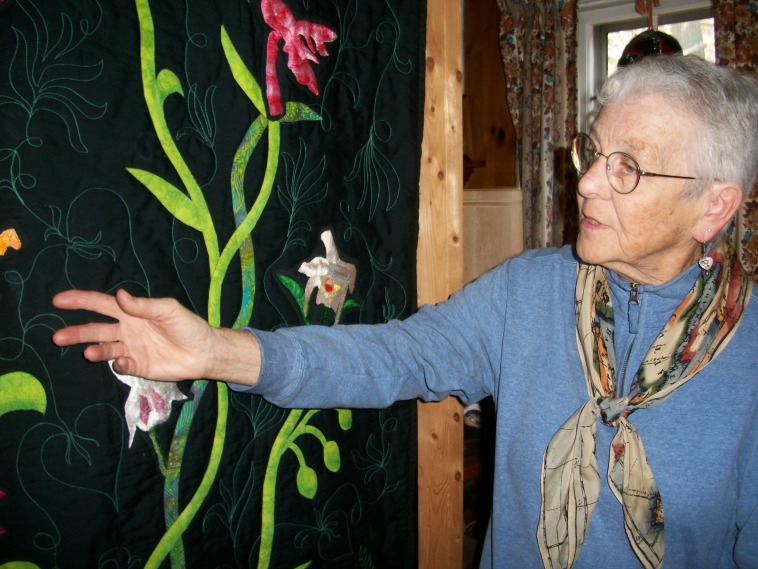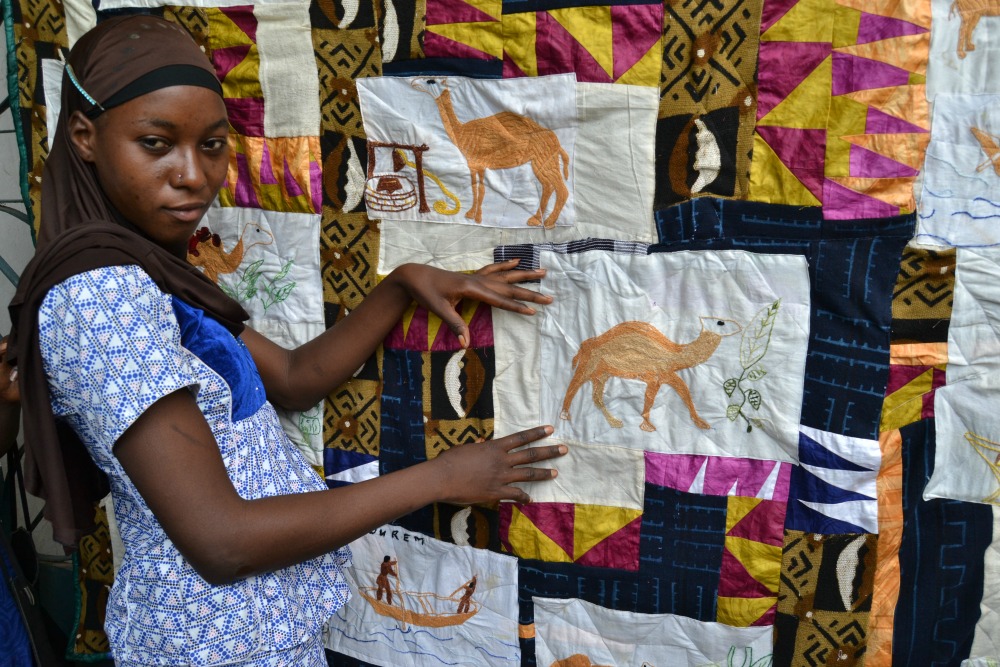Vision and History Where it all began: Survivors of the 1995 Srebrenica massacre work on memorial quilts at BOSFAM. Quilts can tell a powerful story, and as part of our support for community-based campaigns we help partners to produce and use quilts in their advocacy. This was inspired by Bosnian weavers from BOSFAM, our Bosnian partner, who lost relatives in the 1995 Srebrenica massacre. In 2006, with help from Yvette Barnes, a Peace Fellow, the weavers produced woven squares that carried the names of their murdered family members. This became the first of 15 Srebrenica Memorial Quilts. Three years later, in 2009, women from the Guatemalan community of Rio Negro followed the example of the BOSFAM weavers and produced a rich quilt which carried the names of family members who had died in the Rio Negro massacres in 1982. They were helped by Peace Fellow Heidi McKinnon, an accomplished art museum curator. Both groups of women, in Bosnia and Guatemala, had been deeply wounded by war, and both found quilting to be deeply therapeutic. Quilting also allowed them to speak out, develop skills, and produce works of art that keep their culture alive. This formula has proved enormously appealing for women who have faced discrimination and most of the communities that have partnered with AP have produced at least one advocacy quilt (Box). Women from Uganda even made a quilt from recycled straws to publicize the threat to their environment. Precisely because their aim was to be heard, we have profiled every artist who contributed a square on our website. They number almost five hundred and each has a story to tell. Some – as in Mali, where rape is a cause of great stigma – have asked that their true identify be withheld. But the majority has insisted that they be identified. This is their way of denouncing the crime that was committed against them.  Barbara Barber – one of over 60 American quilters who have assembled advocacy quilts – made the Belize orchid quilt. We hoped from the start that these quilts would build international support for partner campaigns. With this in mind we began in 2010 to seek out quilters in the US who would assemble the embroidered squares into finished quilts and by the end of 2016 we had worked with over 40 skilled quilters and their guilds. Their involvement has guaranteed that the embroidery would be turned into superb works of art. We are particularly indebted to Allison Wilbur, who has finished three of our quilts. Allison founded Quilt for Change, which has co-hosted several events with AP. In the process of assembling the quilts many of our American quilters have come to understand the violence suffered by the artists and been shocked by what they have learned. After working on the Ahadi quilts from the Congo Beth Bohac, from the Faithful Circle Quilters of Columbia, MD, observed: “There are women in this world who suffer so much that we cannot even imagine.” Beth’s reaction is captured in this video, one several that AP has made on the assembly of quilts. Between 2010 and 2016 our main goal was to tell a story and if these quilts speak, people have certainly listened. Over 80,000 people visited an exhibition of our quilts at the United Nations in New York in 2012, including the current Foreign Minister of Sweden. Thousands more were able to catch our exhibition of 24 quilts at Kean University in 2013. In November 2013 the renowned Textile Museum in Washington put on a splendid display of eight quilts – the last exhibit at its location. Many other churches, universities and galleries have followed suit, including the Noyes Museum, the New England Quilt Museum, the Long Beach Island Foundation and the Workers and Makers Studio in Rockville, Maryland. The complete list can be found here. Our quilts have also been profiled in the New York Times, by the Voice of America and in several local papers.  Advocacy quilting moves to Africa! War survivors in Bamako made and sold the second Camel Quilt. Many quilts have also been used for advocacy. Bosfam’s memorial quilts, which started it off, were displayed in The Hague in 2008 by survivors of the Srebrenica massacre when Radovan Karadzic (architect of the massacre) went on trial. The Srebrenica quilts were also shown at the UN Human Rights Council in Geneva, and to Bosnian diaspora communities across North America. In July 2015 they served as the backcloth to an emotional speech by Bill Clinton, at the site of the massacre in Bosnia itself. Until now, it has seemed inappropriate to see these quilts as anything other than a deeply personal expression of grief, although we have produced greeting cards which were sold at events. At the same time, we are constantly reminded that many of the artists are desperately in need of money. As a result, we now suggest that partners might also want to produce embroidery that could be offered for sale. The first partner to respond, Sini Sanuman in Mali, has produced two colorful quilts on the theme of camels and sold one to a hotel in Bamako in late 2016. A second group that hopes to sell quilts, NEFAD, represents women in Nepal who lost their husbands during the Maoist rebellion. After using embroidery to commemorate their disappeared loved ones, thirty of the women went on to produce exuberant squares depicting tigers. Their two sets are now being assembled in the US and the Tiger quilts will be offered for sale. We are confident they will carry some bite! |
